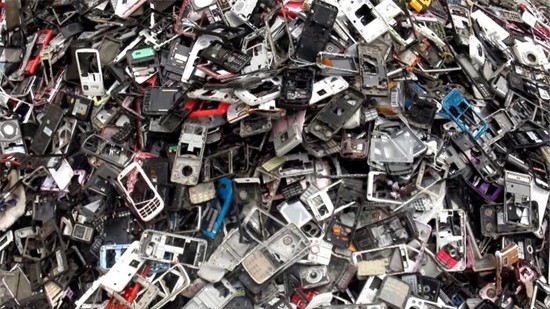Christy Young is a professional copywriter who’s just started her freelancing career. She writes on diverse topics including business, marketing, branding and real estate. From blog writing to ad copy and SEO writing, she delivers top-notch content. In her first posting to 21st Century Tech Blog, Christy writes about e-waste management as a growing 21st-century problem.
We are surrounded by technology today. Each and every year, more products and services are produced and during the COVID-19 pandemic, technology has served as our way to stay connected to the world while isolated. We have turned to technology to communicate, shop, work from home, and empower our everyday lives in the midst of what seems to be utter chaos.
But with our growing reliance on technology we are witnessing an unintended consequence, increasing amounts of electronic waste (E-waste).
What happens to all the technology we buy and use when it becomes outdated?
The Growing Problem Of E-Waste
To a large degree, discarded electronics end up in landfills along with so many other byproducts of our throw-away lifestyle. And that’s a big problem because E-waste contributes to harming the environment.
For example, in the United States, E-waste makes up approximately 2% of the total waste found in landfills, but 70% of the toxic waste which means it has a disproportionately damaging impact on soil, groundwater, animal and plant life, and human health and well-being.
The damage caused by the materials in E-waste as they break down can lead to diminished lung capacity, other respiratory problems, impaired thyroid function, and increased risk of diseases such as cancer in nearby residing human populations according to the World Health Organization. Children growing up near landfills contaminated by E-waste are at the greatest risk.
Why is this happening? Because, for the most part, E-waste disposal in general landfill sites remains unregulated. With E-waste management protocols, however, and recycling programs, the effects can be mitigated over the long term. But this requires an effort by companies and governments.
A Forecast For The Future
Currently, the vast majority of E-waste is not being managed responsibly. Only about 12.5% is currently being dealt with appropriately to lessen the environmental impact and recover materials that can be used in other products. And because E-waste is estimated to be the fastest-growing waste stream in the United States according to the Environmental Protection Agency, much of it is seen as actually marketable through material recovery or refurbishment and upcycling.
But electronic recycling is limited, with companies often restricting what they accept and limiting when and how they will take new items. Perhaps it isn’t surprising that so much e-waste is finding its way to the landfills, regardless of its potential for upcycling. If you are not familiar with the term upcycling, it is a process of transforming waste material into new products with greater value. And with E-waste predicted to double by 2050, it would appear that is an unrealized business opportunity. And as more companies buy into business principles to “do no harm” and begin to adopt circular economic practices, the future may turn E-waste into a significant profit centre by mid-century and beyond. That’s because circular economic principles when adopted by businesses end waste and pollution once and for all.
How Businesses Today Can Reduce the Impact of E-Waste
As responsible leaders in the community, business owners have a strong obligation to be good environmental stewards. Implementing company-wide measures that support environmental sustainability including the management of the electronic technology the business uses including obsolescence can be handled in a variety of ways. For example, a business can:
- Start a company-wide recycling initiative. Company policy should be to recycle E-waste, rather than throw it away. Local community alternatives to throwing things away may include donation centres, charities, and businesses that specialize in refurbishing electronics.
- Encourage employees to recycle E-waste not only at work but at home as well. Make it easy for employees to get rid of old laptops and cell phones and foster a sustainable-business mindset by setting up on-site disposal or donation centres.
- Work with local and international E-waste recycling companies. Find companies that offer free E-waste pick up.
- Donate old electronics whenever possible. A large amount of E-waste isn’t really waste at all, but rather can be used, reworked, or refurbished to become someone else’s valuable tool. Working with organizations that accept donations of old electronics will take what has outlived its usefulness in your company, and give it new life for others.
The extent to which companies can implement these practices depends on the volume of electronics being used and obsolescence periodicity. Circumstances obviously will vary. But that shouldn’t stop every company from facing the E-waste issue head-on.
Why Take Action Now?
Based on expert predictions, E-waste as an environmental problem is expected to continue to grow. We may find ourselves reaching a point in time, not too far in the future, where our landfill sites may be so stuffed with unwanted old electronics we will have created a future environmental nightmare. That’s why each and every one of us has a responsibility to do what we can to prevent E-waste from being disposed of in a way that needlessly impacts the environment. For 21st century businesses, as leaders in local communities, that responsibility is a burden that must be taken up.









